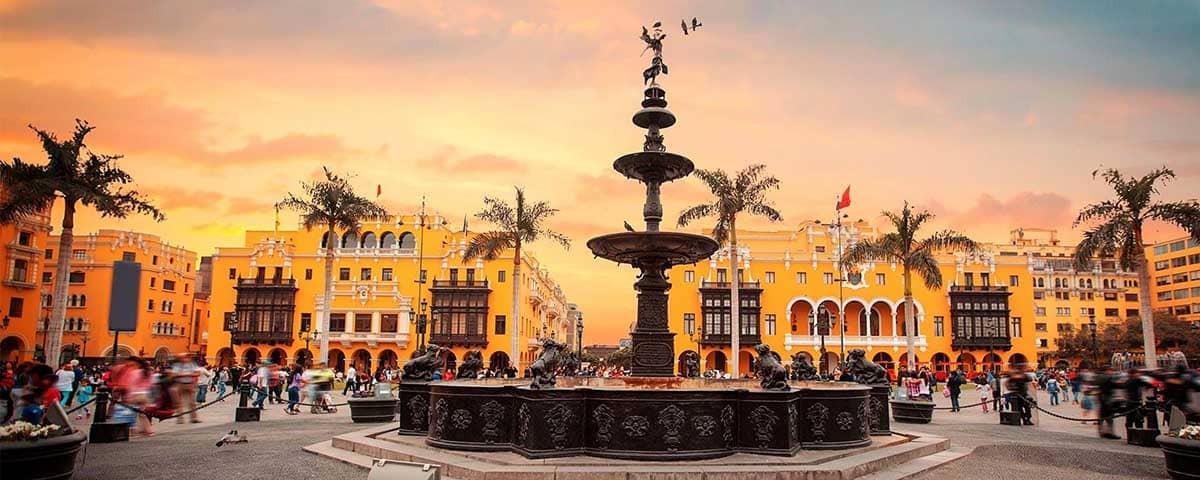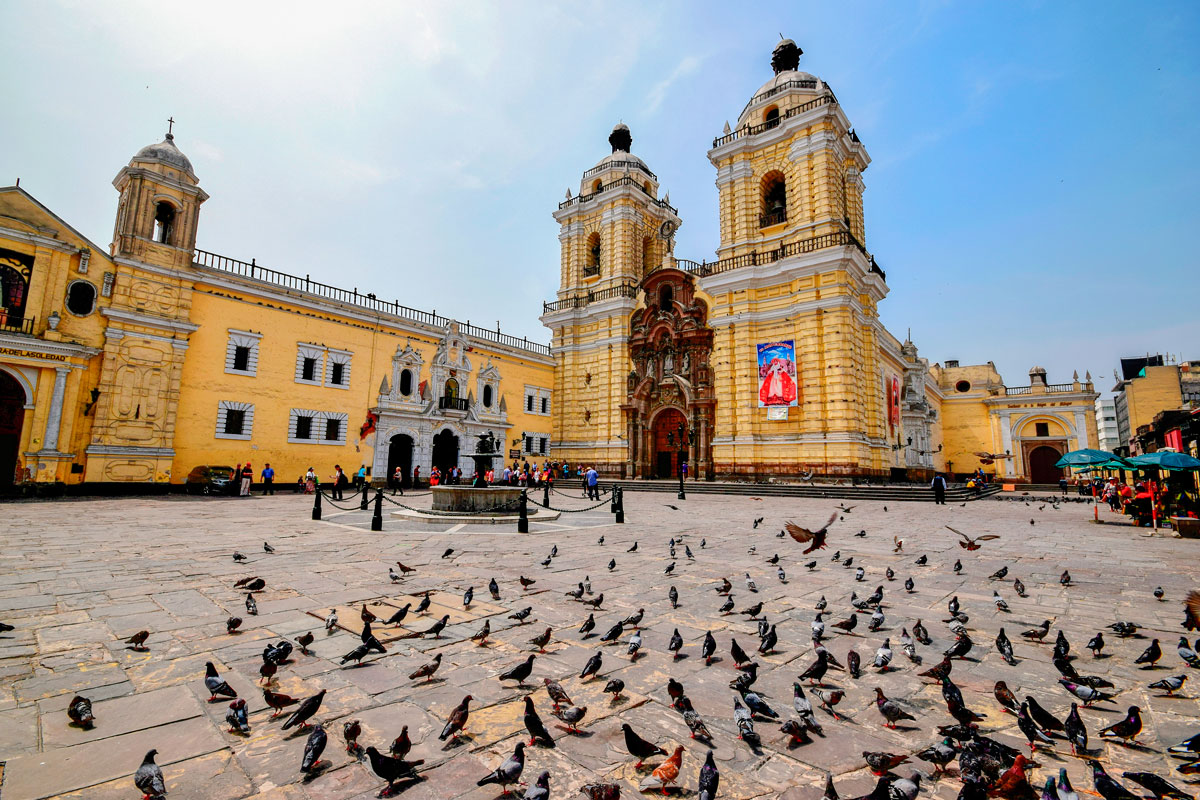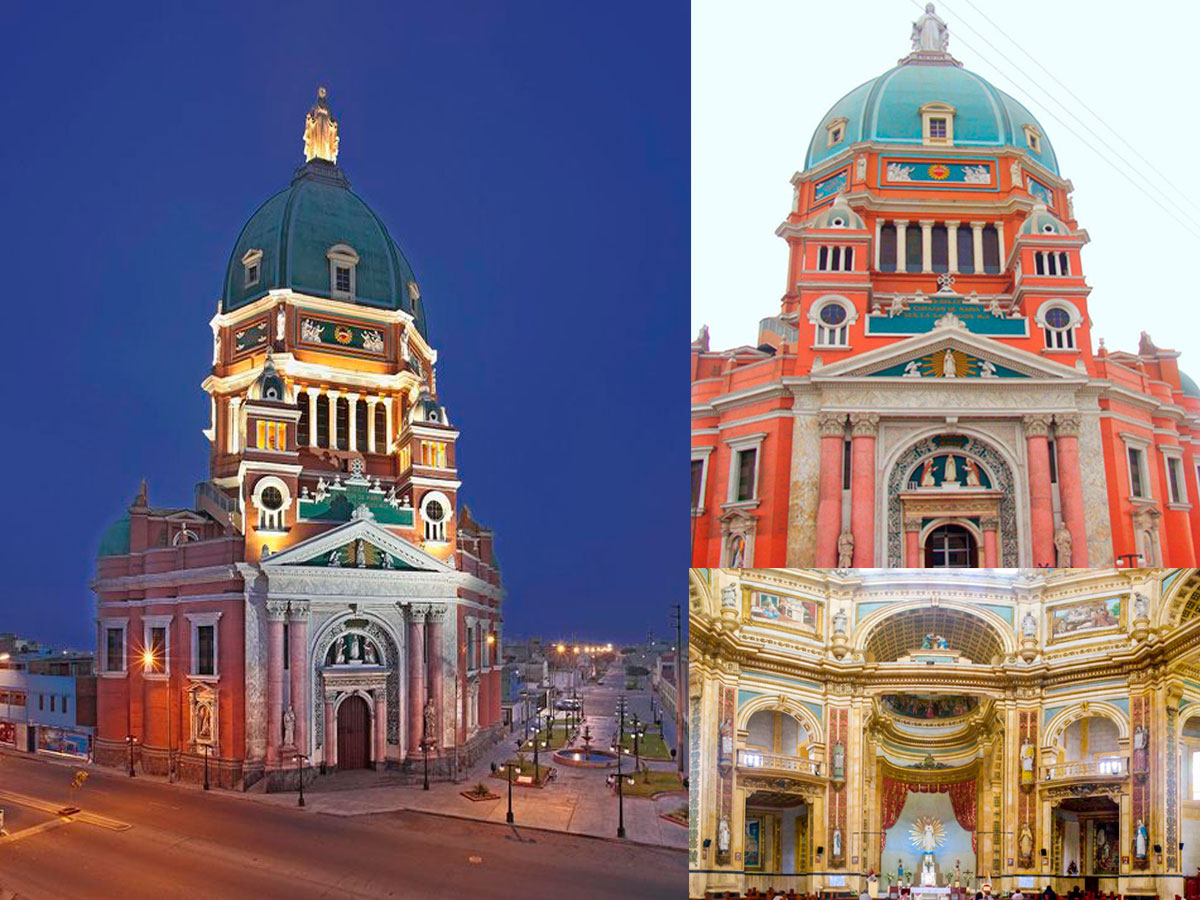
Lima was founded by the Spanish conquistador Francisco Pizarro in 1535, who chose it as the capital city because of its strategic location and its main port, Callao, which was a focal point on the Peruvian and South American coast. During colonial times the city was considered the most important metropolis in Latin America. Nowadays, Lima is the economic and political center of the country and houses almost 30% of the total population of Peru. Its surviving pre-Columbian constructions and colonial temples and houses give the city a magnificent architectural mixture. The downtown area is where you can appreciate this mixture by visiting the Cathedral, The Torre Tagle Palace, San Francisco, Santo Domingo, San Pedro, and Las Nazarenas churches, as well the beautiful nineteenth-century houses that have stunning balconies. A little further ahead, on the way to Miraflores, another important area of the city, you can find the pucllana Indian Tom, an impressive pre-Columbian ceremonial complex, which many assure is a very good starting point of the tour.
Intense cultural and entertaining activities have characterized this city since the sixteenth century, and now it offers you several museums and art galleries as well as modern shopping centers and exciting nightlife. Another interesting aspect of the city is its rich ethnic fusion that can be seen in its ingenious and playful people, the tradition of the Lord of the Miracles (El Señor de Los Milagros), and also in the wide array of culinary options. In 1991 UNESCO declared Lima mankind's historical monument, so don't miss the opportunity to visit this fabulous city.
Lima: Capital of Peru
Location: Central Coast of Peru
Altitude: 154 MAMSL
This metropolis inspires every visitor. The largest metropolis and capital of Peru is home to almost seven million inhabitants and has already grown together with the port city of Callao, so it is located directly on the Pacific Ocean and on the Río Rímac. The number of people living in the administrative region or metropolitan area of the city is estimated at around 9´674,755. With an area of over 2,600 square kilometers and a population density of almost 3,000 people per square kilometer, Lima is one of the major cities in South America.
Lima has a special charm, a flair that makes this city appear very special and of which its residents are rightly proud. Anyone who gets involved in exploring Lima will experience a city that is unique in its structure, nature and number of sights, not to mention the many restaurants and unique cuisine.
In fact, Lima offers many excellent collections. One of the most important is the Archaeological Museum (Museo Larco), just a quarter of an hour's walk from the center, which is considered the gateway to the ancient American culture of the entire Andean region. In the Gold of Peru and Weapons Museum (Museo Oro del Perú y Armas del Mundo), precious metals and jewels glisten wherever you look.

The best point to explore the city is the Plaza Mayor, the central square of the capital of Peru. The fountain from 1651 standing on this square is the zero point of the country from which all distances are counted. This square has been the city's center of government since the beginning. It is said to have been marked with his saber and blood by Francisco Pizarro, the Spanish conquistador and founder of the city. The government palace built in 1938 is also located here. The Archbishop's Palace (Palacio del Arzobispo) with its restored wooden balconies can also be admired by the Plaza Mayor.
RELATED: GOVERNMENT PALACE OF PERU
There is also no shortage of churches worth seeing in Lima. Hundreds of imposing Catholic churches rise up from the sea of houses in the metropolis. Only a few steps now separate the visitor from the magnificent cathedral in the central Plaza Mayor, where Pizarro's bones are said to rest at the entrance, right next to the lion and dedicated to Saint John the Apostle, dates back to 1535.
A visit to the cathedral, which also houses a museum of religious art, is a must and one of the city's highlights. Another thing not to be missed is a visit to the "Museo Arqueológico Rafael Larco Herrera". Here visitors can admire true treasures of pre-Columbian cultures such as mummies, armor, jewelry and models of tombs.
The church and monastery of San Francisco are definitely worth seeing and which is listed as a UNESCO World Heritage Site. This monastery complex has catacombs that were only discovered in 1951 and can be visited with a guide. The construction of the entire complex took 30 years and was completed in 1687. Tourists swarm when they visit the Gold Museum of Peru (Museo de Oro de Perú). This museum is a unique treasure trove of treasures from the pre-Columbian era.

The Templo Corazón de Maria, dedicated to the heart of Mary, is only 70 years old. The green domed building is by far the tallest church in the city. A fiberglass and resin statue of the Virgin Mary shines 70 meters from the top. The residents of the pleasantly quiet and middle-class district of Magdalena del Mar, close to the coast, love this church precisely because it doesn't look as ostentatious from the outside as the lavishly furnished sacred buildings from Lima's early days.

Also is the Basilica San Pedro, built in 1638 in pure neoclassicism by Jesuits as the best preserved sacred building from the time of the Spanish conquistadores - to this day it and the adjacent monastery are administered by the Jesuit order.
With its glass cubes, the Museum of Modern Art (Lima, Museo de Arte Contemporáneo) in the bohemian district of Barranco offers a contrast worth seeing to the historical exhibitions of ancient American cultures. The RIMAC cafeteria is also a pleasant oasis in the hustle and bustle of the city and an ideal place to get in touch with Peruvians who are interested in art.
RELATED:MALI MUSEUM
In Lima and the surrounding area there are several archaeological sites that should definitely be visited. These include Huaca Pucllana and Huaca Huallamarca, which are within the city limits. Also Pachacamac, which is located a bit outside, is worth seeing.
Some visitors consider this city to be South America's most exciting culinary discovery. Every visitor should try ceviche, a truly delicious raw fish or seafood dish in lime juice. Outstanding restaurants such as the Costa Verde with its huge buffet or Las Brujas de Cachiche in Miraflores are just some of the many examples of the city's culinary highlights. Those who visit the café with the catchy name "Café Café", also located in Miraflores, will be served a breathtaking view of the Pacific Ocean free of charge. But Lima is also one of the cities with the greatest concentration of starred restaurants and is known worldwide for its gastronomy.
In Peru's capital there is now a considerable number of top-quality restaurants. Four restaurants in Lima made it into the top 50 in the world, which are regularly chosen by a top-class, international jury.
The Central in the district of Miraflores by chef Virgilio Martinez. The 36-year-old is not only regarded as a representative of the new generation of Peruvian cuisine, he received a Michelin star for his restaurant "Lima" in London in 2013. The creative chef got his inspiration from his work at Astrid y Gaston in Madrid and Bogotá.
The Astrid y Gaston. Gastón Acurio y Astrid Gutsche could already be seen as the veterans of Peruvian gastronomy. Several restaurants in nine different countries, cookbooks and TV shows make the couple a successful team and ambassadors of Peruvian cuisine.
At Cebichería La Mar, Gastón and Astrid hand over the reins to chef Anthony Vásquez. The talented, multi-award-winning chef prepares the country's national dish, ceviche, in all its different forms in a relaxed atmosphere. Serve with a pisco sour for the perfect Peruvian meal!
RELATED: CENTRAL RESTAURANT LIMA PERU
Again and again, for example, in trendy districts such as Barranco (which scores with street art, many galleries and original pubs), Miraflores and San Isidro. Lima's center has recently come back into the colorful game. There, the good old Chinatown around Calle Capón has put itself on the agenda with some ambitious restaurants. Whether the best pisco sour (cocktail based on grape schnapps) is in Chile or in Peru is being discussed like a religious war in both countries - the corresponding drink in the very British-looking Bar Inglés in San Isidro's Hotel Country Club is unsurpassed.
A real legend in Lima is the Bar Cordano, where the Condor tap dances, so to speak. Not a seat is free, a dozen waiters tirelessly bring coffee and trays full of pisco sour glasses. Older men have been sitting at some of the tables for hours with vino tinto and telling each other veteran stories. This is where they all used to sit, drink and verbally change the world: Alberto Sanchez, Alfredo Gonzales Prada, the Nobel Prize winner for literature Mario Vargas Llosa, and also the political caste, who resided diagonally across the street, felt refreshed and comfortable there for many years.
RELATED: KENNEDY PARK LIMA PERU
The city of Lima, located on the coast, has an arid and semi-warm climate. The maximum annual average temperature is 21.97 ° C (71.4 ° F) and the minimum is 17 ° C (62.7 ° F). The climate in Lima is very humid (with a relative humidity that can reach even 100%), despite its location in large desert areas. The precipitations are scarce. In Lima you have to protect yourself from solar radiation using sunscreen, especially if you have clear skin, do not rely on cloudiness without apparent sun.
RELATED: THINGS TO DO IN CALLAO
RELATED: TRAVEL TO LIMA PERU
Even if there are no direct flights from Europe, Africa, Japan, and Australia to the Peruvian capital, travelers can reach Lima via Madrid, Amsterdam, or Caracas. Jorge Chávez Airport is about 12 kilometers northwest of the city and can be easily reached by bus or taxi.